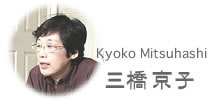|
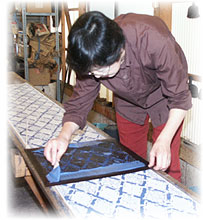 The features
of Fine Patterning lie in the traditional techniques and the original designs that have
been handed down from previous generations. The features
of Fine Patterning lie in the traditional techniques and the original designs that have
been handed down from previous generations.In early times, Patterns were dyed on Kamishimo, the Samurai's formal clothing, but from the mid Edo period, they were even dyed into the common Kimono and Haori-Japanese half Coat-, becoming very familiar items within the common folk's culture. Currently they are being used not only on Kimono's but also on Noren (shop curtains), hand-bags, scarves and the like, all of which are still widely used nowadays. |
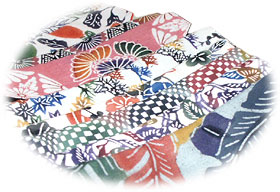 What's your job like? What's your job like?We dye mostly on Kimono such as Furisode, a long Sleeved Kimono, chiefly using silk as the cloth. Besides these, table-centers and Noren curtains as well as simple bags that are carried about easily are dyed with fine patterning. On the basis of production, more than 90% of fine patterning is done on Japanese clothes. 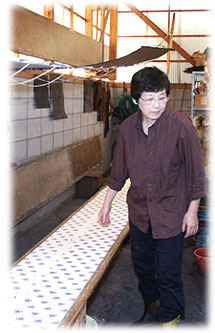 However in recent years, as people who wear Kimono are unfortunately beginning to decline, I'm considering that I have to create something new by using a printing system. How long do you need to finish a piece? There's no easy job that can be done in a short period. The weather is a very important factor that influences the completion of the more in our job. We especially have problems in the very humid rainy season. We are never able to dry the dyes, Because of the high humidity, it is almost impossible to do the job during this time. I myself am engaged on the dyeing table all through the year. About 40 days are needed to finish off one piece, and I'm able to make as many as 10 Tan-one Tan being a roll of cloth 12 yards in length-in parallel with some other works in a month at full blast. It may take up to about 3 months to complete when it is such a difficult piece as a Furisode. 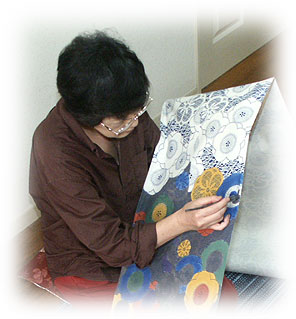 What was your motive to become a dyer? I'm from Fukagawa, Koto-ward in Tokyo and I married into the Matsuhashi family (who were in the dyeing business) as my family had run the Kimono shop in Fukagawa, Tokyo. It has been almost 34 years since I started my dyeing work soon after getting married. What are the merits of a craftsman? Dyeing work seems to be simpler to living things. They don't come out just as I had pictured them to be. However, I sometimes feel happy when some of my works come out well. Although we craftsmen have many difficult tasks, it is a grate joy that we are able to be involved in traditional craftwork like this. 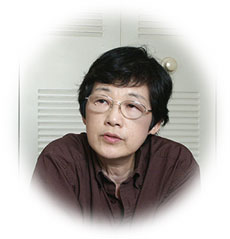 The material benefits are not the first consideration for me, because I love my job and it is my first priority. What's your future plan? Attaching myself to my job for a long time, I can't possibly get rid of the craftsman stereo-type. I think I have to move on and create something different that is affordable and serves as a simple pleasure to have in daily life. |

